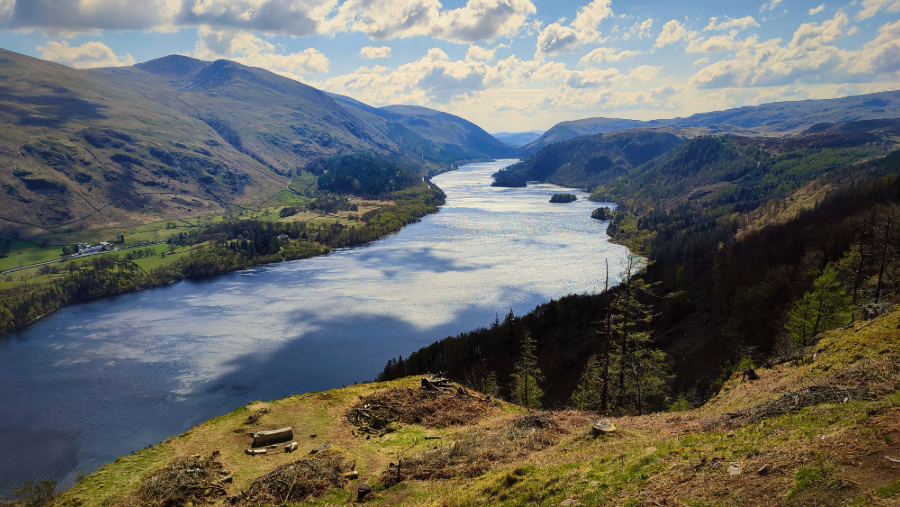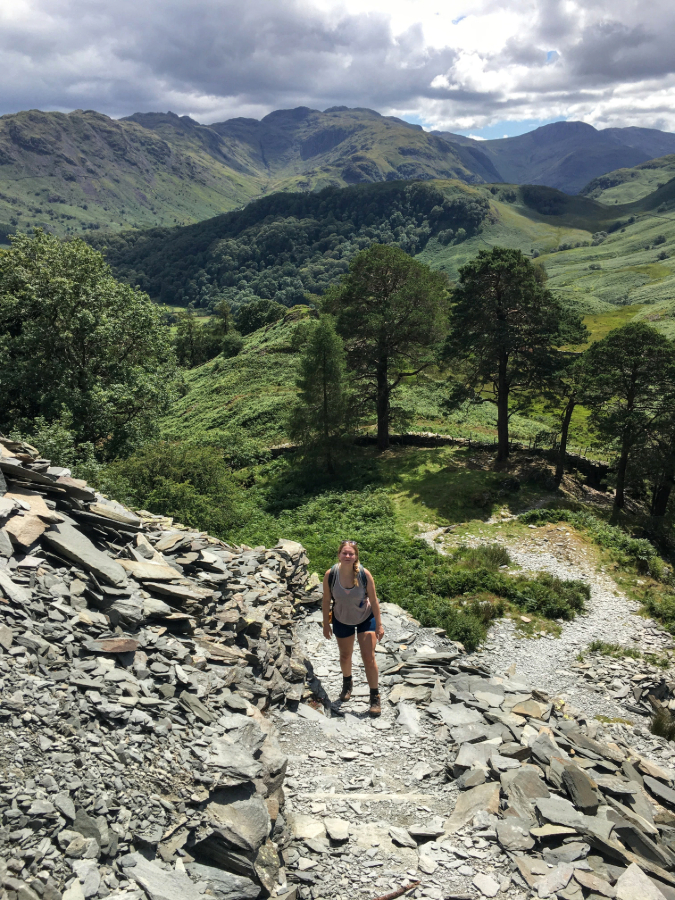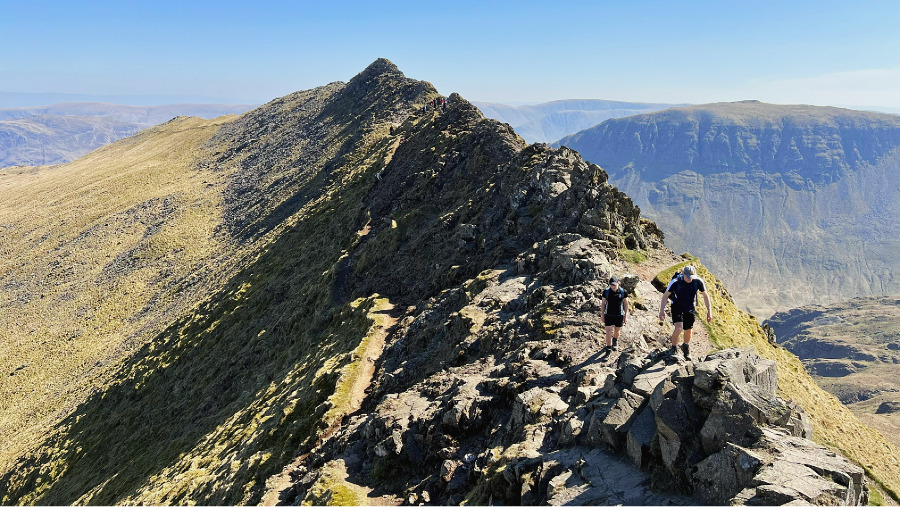So you’ve heard about the Wainwrights—those 214 magical Lake District fells that have become a rite of passage for UK hikers—and you’re thinking about giving peak bagging a go. Brilliant! But here’s the thing: not all Wainwrights are created equal. Some are proper mountains requiring fitness, navigation skills, and a good head for heights. Others are gentle, welcoming fells that are perfect for building confidence and discovering what fell walking is all about.
If you’re new to the Lakes or just starting your Wainwright journey, you’re in exactly the right place. This guide will point you toward the best beginner-friendly Wainwrights—fells that offer maximum reward for manageable effort, stunning views without the terror, and that wonderful summit feeling without needing to be super-fit.
Let’s get you started on what might just become a lifelong obsession.

What Makes a Wainwright “Beginner-Friendly”?
Before we dive into specific fells, let’s talk about what we mean by “beginner-friendly.” We’re looking for walks that tick most of these boxes:
- Moderate height (generally under 500m)
- Well-marked paths with minimal navigation challenges
- No scrambling or technical sections required
- Manageable distance (typically 3-6 miles round trip)
- Accessible from popular villages with parking and facilities
- Stunning views that make the effort worthwhile
- Achievable in 2-4 hours for reasonably fit walkers
The beauty of starting with these easier fells is that you’ll build confidence, work out what gear you need, and discover whether fell walking is really your thing—all without committing to an epic day on the hills.
The Perfect First Wainwright: Where to Begin
1. Latrigg (368m) – The Confidence Builder
Why it’s perfect for beginners: Latrigg is often called the “easiest Wainwright” and it’s a brilliant introduction to Lake District fell walking. Located just outside Keswick, this lovely little fell offers views that punch well above its modest height.
The Route:
- Distance: 3 miles (5km) round trip
- Ascent: 250m
- Time: 1.5-2 hours
- Starting point: Keswick town centre or the car park near the summit
What to expect: The path is clear and well-maintained throughout. You can even drive most of the way up if you want to make it really easy (though where’s the fun in that?). From the summit, you’ll get spectacular views of Skiddaw, Blencathra, Derwentwater, and Keswick spread out below.
Top tip: Go in the evening for stunning sunset views over the northern fells. It’s also brilliant in autumn when the bracken turns golden.
2. Catbells (451m) – The Classic Starter
Why it’s perfect for beginners: Catbells is probably the most popular fell in the Lake District, and for good reason. It’s accessible, achievable, and absolutely gorgeous. This is the fell that has launched a thousand Wainwright addictions.
The Route:
- Distance: 3.5 miles (5.6km) round trip
- Ascent: 300m
- Time: 2-3 hours
- Starting point: Hawse End or Gutherscale (both have parking)
What to expect: A well-worn path with a few steeper sections and some light scrambling near the summit (nothing scary). The ridge walk is exposed but not dangerous, and the views along Derwentwater are absolutely stunning. On a clear day, you can see for miles.
Top tip: Go early morning or late afternoon to avoid the crowds. Catbells can get very busy on sunny weekends. Also, the clockwise route from Hawse End is generally considered easier than going anti-clockwise.

3. Loughrigg Fell (335m) – The Family Favourite
Why it’s perfect for beginners: Loughrigg is short, accessible from Ambleside, and offers some of the best Lake District views you’ll find anywhere. It’s gentle enough for families but interesting enough that you won’t feel like you’re on a boring walk.
The Route:
- Distance: 4-6 miles (various routes available)
- Ascent: 250m
- Time: 2-3 hours
- Starting point: Ambleside or Grasmere
What to expect: Multiple paths lead to the summit, all relatively straightforward. The top is a lovely grassy area perfect for a picnic, with views over Windermere, Grasmere, Rydal Water, and the surrounding fells. You can make this walk as easy or as challenging as you like by choosing different routes.
Top tip: Combine it with a visit to Grasmere village and treat yourself to some famous gingerbread afterward. You’ve earned it!
4. Castle Crag (290m) – The Mighty Mini
Why it’s perfect for beginners: This is the smallest Wainwright (number 214 out of 214), but don’t let that fool you. Castle Crag might be tiny, but it’s a proper little mountain with character, history, and views that will make you gasp.
The Route:
- Distance: 2.5 miles (4km) round trip
- Ascent: 250m
- Time: 1.5-2 hours
- Starting point: Grange-in-Borrowdale
What to expect: A short but steep climb through beautiful woodland, followed by a rockier section to the summit. There’s a war memorial at the top and the remains of old slate quarries add intrigue. The views down Borrowdale are magnificent, and you’ll feel like you’ve climbed something much bigger.
Top tip: This is perfect for testing whether you like the steeper, rockier stuff without committing to a huge walk. Plus, Borrowdale is absolutely stunning.

5. Helm Crag (405m) – The Lion and the Lamb
Why it’s perfect for beginners: Helm Crag is famous for its distinctive rocky summit that looks like a lion and lamb (depending on which angle you view it from). It’s slightly more challenging than the others on this list, but still very achievable and incredibly rewarding.
The Route:
- Distance: 4 miles (6.5km) round trip
- Ascent: 350m
- Time: 2-3 hours
- Starting point: Grasmere village
What to expect: A steady climb on good paths with a rockier scramble at the very top (though you can avoid the actual summit rocks if you’re not comfortable). Despite its modest height, Helm Crag feels like a real mountain peak. The views over Grasmere and toward Helvellyn are superb.
Top tip: The actual highest point requires a bit of scrambling over the rocky outcrops. If you’re not confident with this, the view from just below is almost as good.
More Beginner-Friendly Wainwrights to Add to Your List
Once you’ve ticked off those first five and caught the bug, here are some more excellent beginner options:
Sale Fell (359m) and Ling Fell (373m)
- The two-for-one special: Two easy fells near Cockermouth that you can bag in one walk
- Perfect for: Building confidence and getting two ticks on your list
- Views: Overlooking Bassenthwaite Lake (the only true “lake” in the Lake District!)
Glenridding Dodd (442m)
- The sunrise specialist: Low but incredibly scenic
- Perfect for: Spectacular sunrise views without an epic walk
- Views: Over Ullswater and the surrounding peaks
Black Fell (323m)
- The viewpoint champion: Small fell with disproportionately amazing views
- Perfect for: Lake lovers—you can see multiple lakes from the summit
- Bonus: Easily combined with a Tarn Hows walk
Holme Fell (317m)
- The hidden gem: Quiet, often overlooked, and lovely
- Perfect for: When you want to escape the crowds
- Views: Over Coniston Water and the Coniston fells
Essential Tips for First-Time Wainwright Baggers
Start Small and Build Up
Don’t feel pressured to tackle the big names (Scafell Pike, Helvellyn, etc.) right away. There’s absolutely no shame in starting with the smaller fells. In fact, it’s the sensible approach. You’ll learn what works for you, build fitness gradually, and actually enjoy the experience rather than suffering through it.
Pick the Right Weather
Your first few Wainwrights should ideally be done in good weather. Save the adventurous “walking in all conditions” stuff for when you’ve got more experience. Check the Lake District weather forecast, and be realistic—if it’s going to be misty, rainy, or windy, choose a different day or pick an easier fell.
Get the Right Gear (But Don’t Go Mad)
You don’t need all the gear right away, but a few essentials will make your life much better:
- Good hiking boots (the single most important item)
- Waterproof jacket (because this is the Lake District)
- Layers rather than one thick coat
- Small backpack for water, snacks, and a spare layer
- OS Map and compass (even on easy fells)
- Charged mobile phone (though signal can be patchy)
- Snacks and water (more than you think you’ll need)
Learn Basic Navigation
Even on these easy fells, it’s worth learning basic map reading. The paths are generally obvious, but mist can come down quickly, and it’s reassuring to know where you are. Consider taking a navigation course or going with someone experienced for your first few walks.
Leave No Trace
The Lake District is stunning, but it’s under pressure from overtourism. Do your bit:
- Take all rubbish home (including banana peels and apple cores)
- Stick to marked paths to prevent erosion
- Close gates behind you
- Give way to uphill walkers on narrow sections
- Keep dogs under control near livestock
Time Your Walks Carefully
Popular fells like Catbells and Helvellyn can get incredibly busy on sunny weekends and holidays. If you want a more peaceful experience, go early morning, late afternoon, or on weekdays. You’ll enjoy it much more without fighting for parking or queueing for summit photos.

Building Your Wainwright Journey
Track Your Progress
There’s something deeply satisfying about keeping a record of your Wainwrights. Options include:
- Traditional logbook with dates, weather, and notes
- Wainwright tick-list map (available in Lake District shops)
- Walking apps like OS Maps or Hiiker
- Photo journal on your phone or Instagram
Don’t Rush It
Some people bag all 214 Wainwrights in a year or two. Others take a lifetime. There’s no right or wrong pace. The journey is the point, not just the ticking off. Enjoy each fell, take your time, and savor the experience.
Mix Up Your Areas
The Wainwrights are divided into seven areas (Southern, Eastern, Central, Western, North Western, Northern, and Far Eastern). Try to sample different areas rather than concentrating on just one region. Each area has its own character and charm.
Consider Joining a Group
If you’re nervous about going solo, look for guided walks or join a walking group. Many outdoor shops run beginner walks, and there are numerous walking clubs in the area. It’s also a great way to meet like-minded people and learn from experienced walkers.
When to Progress to Harder Wainwrights
You’ll know you’re ready for more challenging fells when:
- You can comfortably complete 4-6 mile walks with 300-400m of ascent
- You’re confident reading maps and using a compass
- You’ve walked in various weather conditions and know how to layer properly
- You understand your own pace and fitness level
- You’ve got the right gear and know how to use it
- You genuinely enjoy the experience and want more challenge
At that point, you might consider tackling some of the more famous Wainwrights like:
- Blencathra via Hall’s Fell (spectacular but serious)
- Haystacks (Wainwright’s personal favorite)
- Old Man of Coniston (a classic Lake District mountain)
- Helvellyn via Striding Edge (iconic but exposed)

But honestly? There’s no rush. The easier Wainwrights are brilliant in their own right, and many experienced walkers return to them again and again simply because they’re so enjoyable.
Common Beginner Mistakes (and How to Avoid Them)
Underestimating the Weather
The Lake District weather is famously changeable. It can be sunny in the valley and freezing with horizontal rain on the summit. Always pack for worse weather than forecast, especially on higher fells.
Setting Off Too Late
Starting at 2 PM in December is asking for trouble. Make sure you have enough daylight to complete your walk with time to spare. Use Naismith’s Rule to estimate timings (and check out our Naismith Calculator).
Wearing New Boots
Never, ever wear brand new boots on your first fell walk. You’ll get blisters and hate life. Wear them in first on shorter walks or around town.
Not Bringing Enough Water
You’ll drink more than you think, especially on warmer days. Bring at least 1 liter per person, more for longer walks.
Ignoring Your Body
If you’re struggling, it’s okay to turn back. The fell will still be there next time. There’s no shame in deciding a walk isn’t right for you on a particular day.
Your Wainwright Journey Starts Here
The beauty of starting your Wainwright journey with these easier fells is that you’ll build confidence, fitness, and knowledge without putting yourself in situations that are beyond your ability. You’ll also discover pretty quickly whether fell walking is something you love—because if you don’t enjoy Catbells on a sunny day, you probably won’t enjoy Scafell Pike in the rain!
Most importantly, these walks offer genuine mountain experiences with spectacular views, wildlife, history, and that incredible feeling of achievement when you reach the summit. They might be the “easy” Wainwrights, but they’re still proper Lake District fells with all the magic that entails.
So pick a good weather day, grab your boots, pack some snacks, and head up Latrigg or Catbells. Your Wainwright adventure starts with a single step—and there’s no better time than now.
Happy walking, and remember: every single person who’s completed all 214 Wainwrights started with number one. This is yours.
Ready to Start Planning?
Check out our resources:
- 51 Wainwright Walks – Complete collection with GPX downloads
- Naismith Calculator – Estimate your walking times
- All 214 Wainwrights – Complete searchable list
Leave a Reply